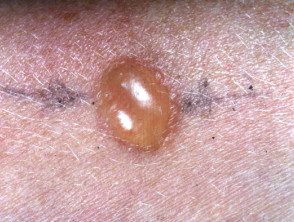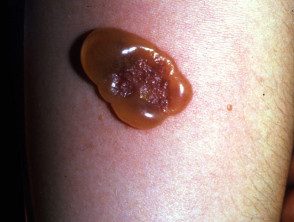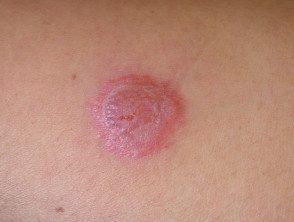What is tuberculosis?
Tuberculosis (TB) is a serious disease. bacterial infection with Mycobacterial tuberculosis (M. tuberculosis) Active infection causes serious illness and death and can be difficult to treat. It can also be spread to other people. Symptoms of an active infection can include:
- Fever, night sweats
- Cough
- Chest pain
- Expectorate sputum I blood
- Weakness, fatigue
- Weight loss, loss of appetite.
Active TB often affects the lungs, but it can affect any part of the body, including the skin (cutaneous TUBERCULOSIS).
What is TB screening?
TB screening refers to the process of examining and evaluating a patient who does not have any symptoms of active TB. An evaluation is done to identify and treat latent TB so that it can be effectively treated before it becomes an active infection.
What is latent tuberculosis?
Latent TB occurs when patients have been alive M. tuberculosis bacteria without knowing that they are infected because their immune system has blocked the bacteria. In healthy people, the tuberculosis bacteria can remain alive in the body without causing illness for many years. Latent TB does not infect other people.
If the immune system breaks down, for example if normal cytokine TNFα is eliminated by certain treatments, latent TB can turn into active TB.
Who is at risk for tuberculosis?
Active or latent TB infection is not common in New Zealand and other developed countries, but it continues to be reported in certain population groups. Risk factors for TB infection include:
- Close contact with a TB patient
- Living in or visiting a country or community where TB is common
- Living in a crowded community, which includes an institution such as a nursing home, a long-stay hospital, a prison
- Working in hospitals and healthcare settings.
When should the tuberculosis test be done?
TB screening should be done in people at risk for TB and in people at risk of converting latent, undetected TB to active TB. For example:
- Treatment with corticosteroids, especially biologics. Tumor Necrosis Inhibitors of factor alpha (TNFα) and immunosuppressive agents such as azathioprine, cyclosporine, mycophenolate or chemotherapy
- Disease, particularly the human immunodeficiency virus (HIV) infection, leukemia, lymphoma, diabetes, alcoholism and renal failure
- Weakness (old age, very young, and long-term or heavy smokers).
What TB tests are done?
After taking a history and general exam, the main TB tests are:
- Chest x-ray
- Tuberculin skin test
- TB blood test (in adults).
TB skin tests and blood tests are usually positive in patients with latent TB; they demonstrate previous infection and a good level of immunity to it. The tests are also positive in patients with active TB.
Test results may require expert interpretation. Other tests may also be required, depending on the symptoms.
Chest x-ray
Latent tuberculosis may be suspected on chest radiograph if any of the following is / is present:
- Fibrotic zone
- Apical scars
- Blunt costophrenic angle
- Calcification
- Pleural thickening.
Patients with active TB may have cavitation or other signs on the x-ray. A patient with latent TB may have a normal chest X-ray.
Tuberculin skin test
The tuberculin skin test or Mantoux test contains a purified protein derivative (PPD) of the tuberculosis bacteria, which is why it is also called a PPD test. The test material does not contain live bacteria and cannot cause TB. The test is performed by specially trained laboratory technicians and other healthcare workers.
- The test is usually done on the inner aspect of a forearm.
- The selected area is first cleaned with an alcohol swab.
- 0.1 ml of tuberculin (F TU) is injected intradermally, elevating a blister 6 to 10 mm in diameter.
The test site is inspected 2-3 days later. The diameter of the thickening of the hard skin is recorded in millimeters. The test is classified as negative (not hardening or less than 5 mm induration) or abnormal (more than 5 mm induration). Abnormal tests can take weeks to go away and can leave a mark or scar.
Severe Mantoux test reactions (active TB)

Mantoux test reaction

Mantoux test reaction

Mantoux test reaction

Mantoux test reaction
Blood test for TB
The usual TB blood test is the interferon gamma release assay (IGRA). There are several options, including QuantiFERON Gold ™. An advantage of IGRA over skin testing is that it is not positive after BCG vaccination. One downside is the difficulty and expense of performing the test accurately.
Test results can be positive (infection likely), negative (unlikely), indeterminate, or equivocal (uncertain). Borderline reactions are seen more frequently in patients taking immunosuppressants, systemic steroids and antimalarial drugs in patients who do not have tuberculosis. The test should be repeated at a later date, as a precautionary measure.
My test is negative. Can I be sure I don't have TB?
Even if initially negative, TB tests should be repeated from time to time in patients at risk of becoming infected with TB and in those at risk of latent TB turning into active TB.
What happens if the test is positive?
If the test is positive, the result should be evaluated by a doctor. Other tests and follow-up may be appropriate.
TB treatment is recommended in patients with active TB and in those at risk of conversion of latent TB to active TB, for example, if they have a chronic immunodeficiency disease or treatment with an immunosuppressive drug.
The usual treatment is isoniazid for 6 months, rifampicin for 3 months, or a combination. Guidelines vary for different populations and if the patient is pregnant or has liver disease (see references).
Should TB tests be repeated?
TB testing should be repeated every year or so in patients taking immunosuppressive drugs or in other patients at significant risk for active TB.


